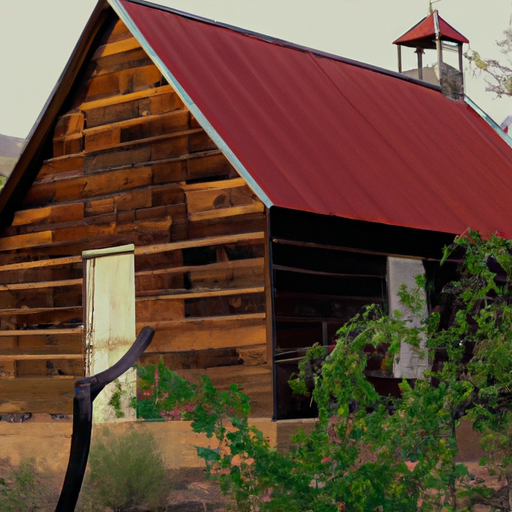Table of Contents
- Introduction
- Exploring the Life and Work of Adolph de Meyer: A Pioneering Photographer
- Adolph de Meyer: The Innovative Use of Color in Early Photography
- Adolph de Meyer and the Art of Fashion Photography
- Adolph de Meyer: Capturing the Glamour of the Belle Époque
- Adolph de Meyer and the Influence of His Work on Modern Photography
- Conclusion
«Capture the Moment with Adolph de Meyer – Timeless Photography for a Lifetime of Memories»
Introduction
Adolph de Meyer was a pioneering photographer and portraitist who was active in the early 20th century. He was born in Paris in 1868 and began his career as a painter before turning to photography in the 1890s. He quickly became one of the most sought-after portrait photographers of the era, and his work was featured in publications such as Vogue and Vanity Fair. He was known for his innovative use of lighting and composition, and his portraits often featured a soft, dreamy quality. He was also a pioneer in the use of color photography, and his work was highly influential in the development of modern photography. De Meyer’s work is still highly regarded today, and his photographs are held in the collections of many major museums.
Exploring the Life and Work of Adolph de Meyer: A Pioneering Photographer
Adolph de Meyer (1868-1946) was a pioneering photographer who helped to shape the art of photography in the early 20th century. He was born in Paris, France, and began his career as a painter before turning to photography in the 1890s. De Meyer was a master of the medium, and his work was highly sought after by magazines and art galleries. He was known for his elegant and sophisticated style, which often featured glamorous subjects in luxurious settings.
De Meyer was one of the first photographers to use artificial lighting in his work, and he was also an early adopter of the autochrome process, which allowed for color photography. He was a master of composition and lighting, and his photographs often featured a dreamlike quality. He was also a master of portraiture, and his subjects included some of the most famous people of the day, such as the Prince of Wales, the Duke of Windsor, and the actress Sarah Bernhardt.
De Meyer was a prolific photographer, and his work appeared in many of the leading magazines of the day, including Vogue, Vanity Fair, and Harper’s Bazaar. He was also a frequent contributor to the influential photography magazine Camera Work, which was published by Alfred Stieglitz. His work was highly praised by critics, and he was awarded the Chevalier of the Legion of Honor in France in 1921.
De Meyer’s influence on the art of photography was immense, and his work helped to shape the modern aesthetic. He was a master of composition and lighting, and his photographs often featured a dreamlike quality. He was also a master of portraiture, and his subjects included some of the most famous people of the day. His work was highly sought after by magazines and art galleries, and he was awarded the Chevalier of the Legion of Honor in France in 1921.
Adolph de Meyer was a pioneering photographer who helped to shape the art of photography in the early 20th century. His elegant and sophisticated style, combined with his mastery of composition and lighting, made him one of the most influential photographers of his time. His work was highly praised by critics, and his influence on the art of photography was immense. He was a master of portraiture, and his subjects included some of the most famous people of the day. His work continues to inspire photographers today, and his legacy will live on for generations to come.
Adolph de Meyer: The Innovative Use of Color in Early Photography
Adolph de Meyer (1868-1946) was a pioneering photographer who was renowned for his innovative use of color in early photography. He was one of the first photographers to experiment with color photography, and his work was highly influential in the development of the medium.
De Meyer was born in Paris and began his career as a fashion photographer in the late 1890s. He quickly gained recognition for his unique style, which combined traditional black-and-white photography with the use of color. He was one of the first photographers to use color filters to create a more vivid and vibrant image. He also experimented with the use of colored gels and dyes to create a range of different effects.
De Meyer’s use of color was revolutionary for its time. He was able to capture the vibrancy of the world around him in a way that had never been seen before. His photographs were often filled with bright, vivid colors that brought the subjects to life. He was also able to capture the subtle nuances of color in a way that was previously impossible.
De Meyer’s work was highly influential in the development of color photography. His use of color filters and dyes helped to create a more vivid and vibrant image, and his work was highly influential in the development of the medium. His work was also highly influential in the development of fashion photography, as his use of color helped to create a more dynamic and stylish look.
Adolph de Meyer’s innovative use of color in early photography was highly influential in the development of the medium. His work helped to create a more vivid and vibrant image, and his use of color filters and dyes helped to create a more dynamic and stylish look. His work was highly influential in the development of fashion photography, and his use of color helped to create a more vibrant and stylish look.
Adolph de Meyer and the Art of Fashion Photography

Adolph de Meyer was a pioneering figure in the world of fashion photography. He was born in Paris in 1868 and began his career as a portrait photographer in the late 1890s. He quickly gained recognition for his innovative approach to fashion photography, which combined elements of painting, sculpture, and theater.
De Meyer was the first photographer to be hired by the prestigious fashion house of Vogue in 1913. He was known for his use of bold lighting, dramatic poses, and creative backdrops. He was also one of the first photographers to use color photography in fashion shoots. His work was highly influential in the development of modern fashion photography.
De Meyer’s photographs were often characterized by a sense of elegance and sophistication. He was known for his use of soft lighting and muted colors, which gave his images a dreamy, romantic quality. He was also known for his use of props and backdrops, which he used to create a sense of atmosphere and drama.
De Meyer’s work was highly influential in the development of modern fashion photography. His photographs were often seen as a bridge between the traditional and the modern, combining elements of both. His work was highly influential in the development of the modern fashion aesthetic, and his influence can still be seen in the work of contemporary fashion photographers.
Adolph de Meyer was a pioneering figure in the world of fashion photography. His innovative approach to fashion photography combined elements of painting, sculpture, and theater, and his work was highly influential in the development of modern fashion photography. His photographs were often characterized by a sense of elegance and sophistication, and his influence can still be seen in the work of contemporary fashion photographers.
Adolph de Meyer: Capturing the Glamour of the Belle Époque
Adolph de Meyer (1868-1946) was a pioneering photographer who captured the glamour of the Belle Époque, the period of European history spanning the late 19th and early 20th centuries. Born in Paris, de Meyer was the son of a wealthy banker and was exposed to the world of high society from an early age. He began his career as a painter, but soon developed an interest in photography.
De Meyer’s photographs were characterized by their elegance and sophistication. He was a master of composition, often using props and backdrops to create a sense of drama and atmosphere. He was also a master of lighting, using natural light to create a soft, dreamy effect. His subjects ranged from society portraits to fashion photography, and he was one of the first photographers to use color photography.
De Meyer’s work was highly sought after by magazines and newspapers, and he was commissioned to photograph some of the most famous figures of the time, including the Prince of Wales, the Duke of Windsor, and the Maharaja of Baroda. He also photographed some of the most iconic figures of the era, such as Coco Chanel, Isadora Duncan, and Marlene Dietrich.
De Meyer’s photographs are a testament to the glamour and sophistication of the Belle Époque. His work captures the beauty and elegance of the period, and his influence can still be seen in the work of modern photographers.
Adolph de Meyer and the Influence of His Work on Modern Photography
Adolph de Meyer (1868-1946) was a pioneering photographer who helped to shape the modern art of photography. He was born in Paris, France, and began his career as a painter before turning to photography in the early 1900s. He quickly became known for his innovative and creative approach to the medium, and his work had a profound influence on the development of modern photography.
De Meyer was a master of composition and lighting, and his photographs often featured bold, dramatic lighting effects. He was also a master of portraiture, and his portraits of celebrities and royalty were highly sought after. He was also an early adopter of color photography, and his use of color in his photographs was groundbreaking.
De Meyer’s influence on modern photography can be seen in the work of many of today’s leading photographers. His use of bold lighting and color, as well as his mastery of composition, have been adopted by many modern photographers. His portraits of celebrities and royalty have also been widely imitated, and his influence can be seen in the work of many contemporary portrait photographers.
De Meyer’s influence on modern photography is undeniable. His innovative approach to the medium helped to shape the art of photography as we know it today. His work continues to inspire photographers around the world, and his legacy will live on for generations to come.
Conclusion
Adolph de Meyer was a pioneering photographer who helped to shape the art of photography in the early 20th century. His work was innovative and influential, and he was a master of both portraiture and fashion photography. He was also a key figure in the development of modern photographic techniques, such as the use of natural light and the use of soft focus. His legacy lives on in the work of modern photographers who continue to be inspired by his pioneering vision.

































